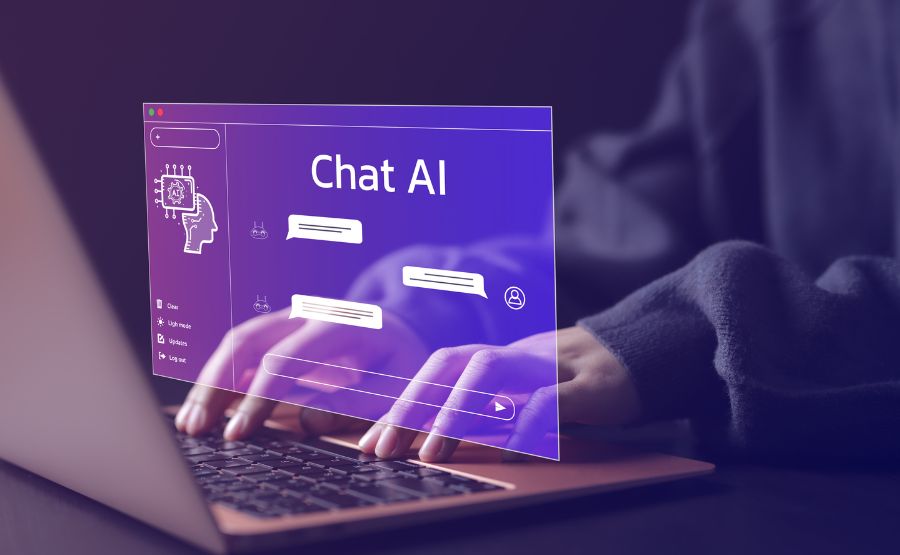1. Understanding Generative AI
Generative AI refers to algorithms that can generate new, previously unseen data, including text, images, and even music. Unlike traditional AI, which analyzes and learns from existing data to make predictions, Generative AI creates new content, offering a wide array of possibilities for innovation and creativity. This transformative capability opens the door to countless applications, from revolutionizing the creative arts to driving forward scientific research by hypothesizing novel concepts and solutions.2. Essential Features of Generative AI

- Autonomy: Generative AI operates independently, making decisions and generating content based on learned data, adapting to various scenarios without explicit task-specific programming.
- Creativity: It excels in creating new art, music, and text, pushing creative boundaries, and offering tools to inspire and augment human creativity.
- Diversity: The AI produces a wide variety of content, ensuring a broad spectrum of results suitable for different applications and audiences.
- Learning: By analyzing extensive datasets, Generative AI learns and replicates patterns, enabling it to generate unique content that reflects learned structures and styles.
- Multimodal Capabilities: These systems understand and generate multiple data types like text, images, and sounds simultaneously, allowing for the creation of complex, rich media experiences.
3. Recap of Generative AI in 2023
The year 2023 was pivotal for Generative AI. Technologies like GPT-3 and DALL-E2 not only captured the public imagination but also demonstrated practical applications ranging from automated content creation to aiding in complex design tasks. Other notable advancements include Midjourney AI for generating hyper-realistic images and BERT for understanding the context in natural language processing. The industry saw a surge in investment, with AI startups raising over $7.4 billion in the first half of 2023 alone, setting the stage for even more groundbreaking developments. These investments fueled innovations across various sectors, including healthcare, where AI began personalizing patient treatment plans, and in entertainment, revolutionizing how we interact with digital media. As we move forward, the integration of these AI technologies into everyday tools and platforms is becoming increasingly seamless, marking 2023 as the year Generative AI truly began to reshape our digital landscape.4. Trends in Generative AI for 2024
 Advancements in Generative ModelsThe evolution of models like GPT and DALL-E, along with advancements in systems like AlphaFold, will likely introduce capabilities that blur the lines between AI-generated and human-created content, with applications expanding into sectors like gaming, film, and virtual reality. These advancements are not just limited to visual and textual content; they also extend to creating functional apps, generating intricate images, and even writing and optimizing code. AlphaFold's breakthrough in predicting protein structures, for instance, demonstrates the profound potential of AI to solve complex scientific challenges, further broadening the scope of what can be achieved with AI across various creative and technical domains.Multimodal Generative AIThe future is multimodal. Generative AI models will increasingly handle multiple types of data inputs and outputs, from text and images to sounds and videos. This multimodal approach will enable more comprehensive and versatile applications, enhancing user experiences and creating new opportunities for interactive media.As these technologies continue to mature, we can anticipate a seamless integration of different media types, leading to richer, more immersive digital environments that cater to a wide array of sensory experiences.Explainable Generative AIAs AI's capabilities expand, so does the need for transparency. 2024 will see a push towards explainable AI, where users can understand and trust how AI models make decisions. This is crucial for ethical considerations, especially in sensitive areas like healthcare and law, where understanding AI's 'thought process' is as important as the results it produces.AI-Augmented CreativityGenerative AI is not replacing human creativity; it's augmenting it. Artists, designers, and writers are using AI as a collaborative tool to push the boundaries of creativity. For instance, in the music industry, artists like Taryn Southern have composed albums using AI platforms like Amper Music, blending human emotion with AI's compositional capabilities to create unique sounds. This collaboration between artist and technology showcases how AI can serve as a creative partner, enhancing the artistic process and opening up new possibilities for innovation and expression.In 2024, expect to see more AI-human partnerships, where AI's ability to generate ideas and content complements human creativity and emotional intelligence, leading to innovative works that were previously unimaginable.
Advancements in Generative ModelsThe evolution of models like GPT and DALL-E, along with advancements in systems like AlphaFold, will likely introduce capabilities that blur the lines between AI-generated and human-created content, with applications expanding into sectors like gaming, film, and virtual reality. These advancements are not just limited to visual and textual content; they also extend to creating functional apps, generating intricate images, and even writing and optimizing code. AlphaFold's breakthrough in predicting protein structures, for instance, demonstrates the profound potential of AI to solve complex scientific challenges, further broadening the scope of what can be achieved with AI across various creative and technical domains.Multimodal Generative AIThe future is multimodal. Generative AI models will increasingly handle multiple types of data inputs and outputs, from text and images to sounds and videos. This multimodal approach will enable more comprehensive and versatile applications, enhancing user experiences and creating new opportunities for interactive media.As these technologies continue to mature, we can anticipate a seamless integration of different media types, leading to richer, more immersive digital environments that cater to a wide array of sensory experiences.Explainable Generative AIAs AI's capabilities expand, so does the need for transparency. 2024 will see a push towards explainable AI, where users can understand and trust how AI models make decisions. This is crucial for ethical considerations, especially in sensitive areas like healthcare and law, where understanding AI's 'thought process' is as important as the results it produces.AI-Augmented CreativityGenerative AI is not replacing human creativity; it's augmenting it. Artists, designers, and writers are using AI as a collaborative tool to push the boundaries of creativity. For instance, in the music industry, artists like Taryn Southern have composed albums using AI platforms like Amper Music, blending human emotion with AI's compositional capabilities to create unique sounds. This collaboration between artist and technology showcases how AI can serve as a creative partner, enhancing the artistic process and opening up new possibilities for innovation and expression.In 2024, expect to see more AI-human partnerships, where AI's ability to generate ideas and content complements human creativity and emotional intelligence, leading to innovative works that were previously unimaginable.5. Generative AI Applications in 2024
Content Creation:Automated writing assistants and graphic design bots will become more sophisticated, enabling faster and more creative content production.Generative AI will start to play a significant role in creating realistic animations and special effects, reducing production time and costs in the film industry.User Experience:Personalized and adaptive content will redefine interactions with technology, offering tailored experiences based on user preferences and behaviors.Enhanced AI will create dynamic gaming environments that adapt to players' actions and preferences, providing a highly personalized gaming experience.Healthcare: AI-generated models will aid in complex diagnoses and treatment planning, enhancing accuracy and efficiency in medical care.Generative AI will contribute to the development of personalized treatment plans based on individual genetic profiles, improving patient outcomes.Streamlining Operations:Across various sectors, Generative AI will streamline operations, reducing the time and resources needed for tasks that AI can optimize.AI will predict and respond to supply chain demands and disruptions, optimizing logistics and inventory management.Innovation Avenues:The advanced capabilities of Generative AI will open new avenues for innovation, pushing the boundaries of what's possible in creative, technical, and scientific fields.AI will assist in designing more efficient and sustainable buildings and urban spaces by simulating and analyzing countless design variations.
AI-generated models will aid in complex diagnoses and treatment planning, enhancing accuracy and efficiency in medical care.Generative AI will contribute to the development of personalized treatment plans based on individual genetic profiles, improving patient outcomes.Streamlining Operations:Across various sectors, Generative AI will streamline operations, reducing the time and resources needed for tasks that AI can optimize.AI will predict and respond to supply chain demands and disruptions, optimizing logistics and inventory management.Innovation Avenues:The advanced capabilities of Generative AI will open new avenues for innovation, pushing the boundaries of what's possible in creative, technical, and scientific fields.AI will assist in designing more efficient and sustainable buildings and urban spaces by simulating and analyzing countless design variations.








The Upcoming Trends in Generative AI for 2024
As we approach 2024, the realm of artificial intelligence is on the cusp of revolutionary...
Share this link via
Or copy link